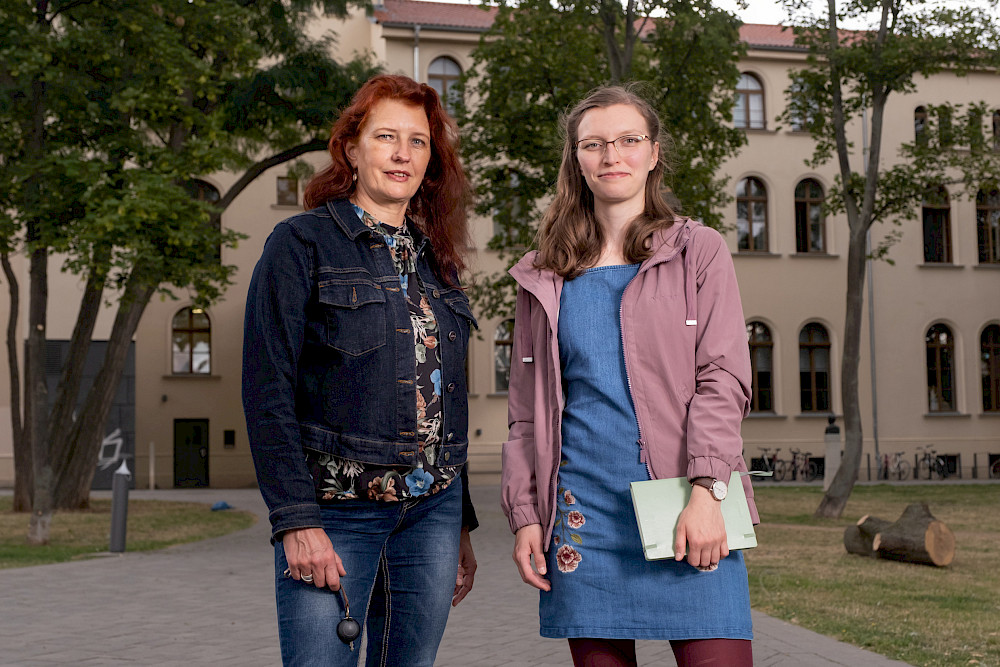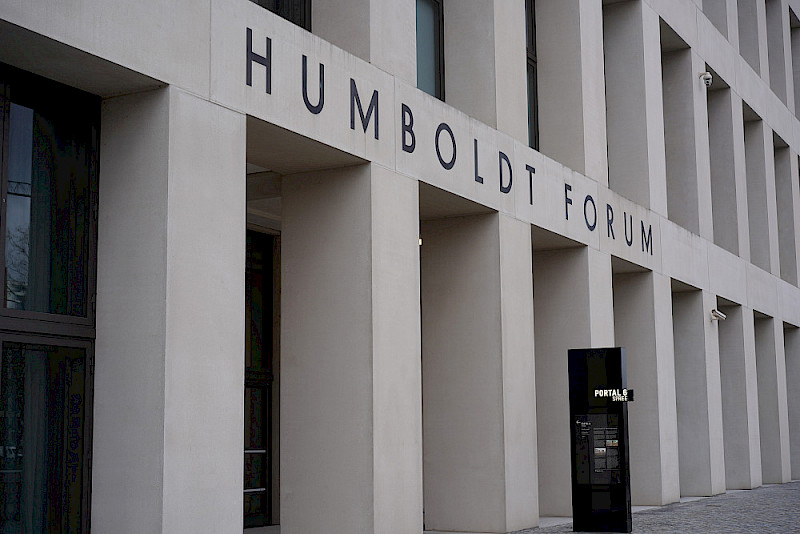Looted art – a challenge for museums

Ms Ueckmann, the topic of your seminar couldn’t have been more relevant. As recently as early July, representatives of the Nigerian and German governments signed a memorandum of understanding on how to return numerous bronze statues to the former kingdom of Benin.
Natascha Ueckmann: Yes, that’s right. However, we didn’t focus as much on the Benin bronzes. They were looted by the British during so-called punitive expeditions and then sold to German museums. This is probably why it is easier for Germany to return these cultural assets. The cultural assets from former German colonies such as Tanzania, Togo, Namibia and Cameroon are an entirely different matter. We looked at things like the early film essay “Les statues meurent aussi” (1953) or “Black Panther” (2018), both of which sharply criticise the display of African artwork in European museums.
Why did you decide to offer a seminar on restitution?
Ueckmann: I have been working on colonialism and decolonial challenges for more than 20 years. Restitution - the return of looted art - is especially topical, as one can see from all the news stories and articles. Incidentally, the debate is not only about non-European cultures; we also need to critically examine ourselves, namely how travelling, researching, conquering, discovering and exhibiting are connected to concrete power relations.
How was the seminar conducted? What was its aim?
Ueckmann: In addition to reading research literature, I wanted to bring the university into contact with non-university institutions, for example museums, but also with African scholars such as Kokou Azamedé from Togo, who works on the restitution of human remains. This contact yields many unanswered questions. Speaking with initiatives critical of the Berlin Humboldt Forum was also on our agenda.
Ms Fuss, how did you find this approach?
Lilly Fuss: I wasn’t used to dealing with topics that are currently part of public discourse. The excursions were a nice opportunity to engage with the topic beyond the research literature and to develop our own questions. We then discussed these, for example, with the activist group BARAZINI.berlin, which opposes the structures of the Humboldt Forum and how it works. Dealing with the topic both at the university and outside of it was very insightful.
What research remains to be done on the subject? Isn’t the situation clear: stolen goods must be returned?
Fuss: When I initially read a description of the seminar, I thought the same thing: Why don’t they just return the cultural assets? In the seminar we read “Restituer le patrimoine africain” (The Restitution of African Cultural Heritage) by Felwine Sarr and Bénédicte Savoy. Emmanuel Macron had commissioned them to draw up an official restitution report for cultural assets looted by the French. While reading, I kept thinking: something has got to change now, a wave is going to be unleashed - but this wasn’t followed up by action. Just reading about it was extremely frustrating. Basically, we’ve been going around in circles for decades. Even in the Humboldt Forum, for example, there was an information board that said that objects in the collection were “sometimes acquired illegally”, which is an understatement and misleading given the colonial power structures and the size of the collection, which contains approximately 75,000 cultural objects of African provenance.
Ueckmann: When it comes to such forms of injustice, one would think that things should just simply be returned. But then this injustice is put off, forgotten and suppressed. This overdue debate requires pressure from the public.
What are the arguments against repatriation?
Ueckmann: There are quite a number: the objects would be looked after well here, they could be damaged during transport, and there would be no adequate exhibition facilities in the countries where they originated from. These are flimsy arguments, considering that, even in our country, access to the entire collection is limited. The Humboldt Forum says that it only exhibits five per cent of its collection. Savoy writes that the cultural assets are thus doubly buried in the collective unconsciousness, both European and African.
Fuss: Plus, the cultural objects that are displayed here are not at all contextualised. Each exhibit has the name of the “discoverer” - or rather the robber - as well as the country where it was discovered, and the time when it was made and collected. Why should people from the Global South have to come here to look at their own cultural assets? Not only that, they are organised from the collector’s viewpoint. When we spoke with BARAZINI.berlin, we learned that exhibitions we already being organised this way at the start of the 20th century. We would find it absurd to see Germany, Italy and France reduced to a few objects presented together in such showcases.
As part of the seminar, you also contacted the German Lost Art Foundation in Magdeburg and visited the Overseas Museum in Bremen. What made you decide to do this?
Ueckmann: We discovered the Foundation while reading the course material during the seminar. The Foundation actively works on addressing the topic of the restitution of “objects” removed within a colonial context. For a long time, it focused on the confiscation of cultural property in the Nazi state and in the Soviet occupation zone and the GDR. It wasn’t until 2018 that a section on “cultural property and collections from colonial contexts” was created. We were very interested in this because the Foundation also offers further education in postcolonial provenance research in partnership with the Free University. This creates a link between science and professional experience.
Fuss: We were interested in the practical application because the research literature only contains theory. The Foundation also manages and promotes research projects on the subject. It was very exciting to see how research projects and restitution requests are negotiated.
Ueckmann: We also developed ideas for research projects. One idea was aimed at the role of women in the expeditions as collectors of cultural goods and human remains - what type of complicity was there? Little research has been done on this so far.
And Bremen?
Ueckmann: Here I contacted Dr Detlev Quintern, whom I met during my time at the University of Bremen. He was also running a similar seminar and used to work at the Overseas Museum. In 1984 its former director Herbert Ganslmayr, together with journalist Gert von Paczensky, wrote the book “Nefertiti Wants to Return Home”. It was a very early study on restitution in Germany from a museum’s perspective. They argue in the book that there are good reasons to do this. They didn’t make any friends within the community by saying that.
Fuss: The Overseas Museum used to be an educational space for school classes and future merchants. There, budding merchants learned about goods and the “local people”. That’s why the people were always shown next to the merchandise.
For many years, there has been a debate about what to do with looted art. What role do museums play in this?
Ueckmann: Museums exude a certain helplessness. In my opinion, museological paternalism, the role of the “good guardian”, has had its day. Cultural ownership as an expression of national assertion, which is still true for all major European museums, is not a vision for the 21st century. In this context, museums could be places of postcolonial solidarity, reparation, and decolonisation of knowledge.
Fuss: A representation of resistance against colonialism is still very much lacking. African societies are often depicted as victims. There has always been resistance against the colonial masters: against the theft of people, goods and resources. This part of the story often remains untold or is played down.
What was the contact to the museums like?
Ueckmann: I had announced that our group would be visiting the Humboldt Forum and asked to speak with them afterwards. I didn’t find anyone who wanted to talk to us. That’s why we contacted the BARAZANI.berlin group.
Fuss: Ultimately, the impression throughout the semester was that museums are somewhat dead spaces. Objects stand behind rigid display cases. They are preserved and uprooted. How can one connect with such an object? Discussions could help to make access easier and bring things to life. Museums should be places for everyone to experience education - forums for dialogue.
What would be a better way of dealing with the issue?
Fuss: The museum of the future is not actually designed for a building like the Humboldt Forum in the Berlin Palace, because the building itself is inappropriate. The way objects are exhibited is often conservative and reactionary. Masks, for example, are used in certain ritual contexts which are needed to understand them. Often they are only meant to be seen by certain groups in the community - they are not meant to be exhibited.
Ueckmann: The Grassi in Leipzig is currently in the process of transforming itself into a network museum. Under the title REINVENTING GRASSI.SKD, it is focusing on a diversity of voices and activist approaches to museum history, acquisition, exhibition and restitution issues.
If the pieces are “simply” transferred to their country of origin, a gap is created in a museum. How can this be filled so that the debate about looted art continues?
Fuss: One question we dealt with in the seminar was: Does restitution end once things have been returned? More obviously needs to be done - for example, a comparable museum infrastructure should be built in these countries.
Ueckmann: Museums needs to be much livelier: a space for communication. For example, the instruments on display there could be played. Museums should be places for education, exchange and encounters - in the sense of a public history. Overall, I think that material culture, exhibited in a decolonial way, is very important because it is a huge memory reservoir. But museums have to face up to radical criticism if a sincere dialogue is to be held on an equal footing. This also poses great challenges to disciplines such as ethnology and anthropology. Both are aware of what they have inherited. But, given the “collecting mania” of European colonialism, this mammoth task has only just begun.

